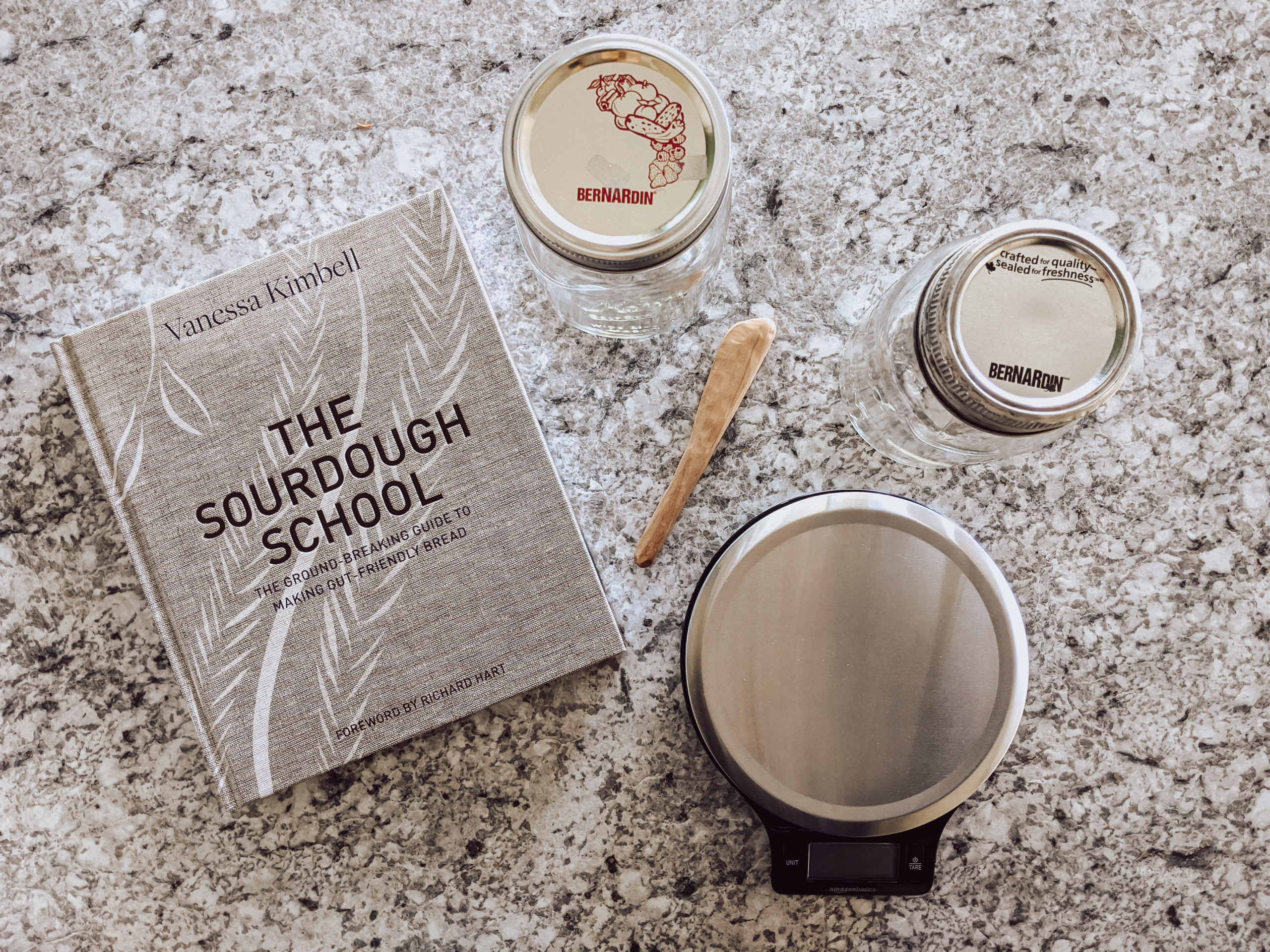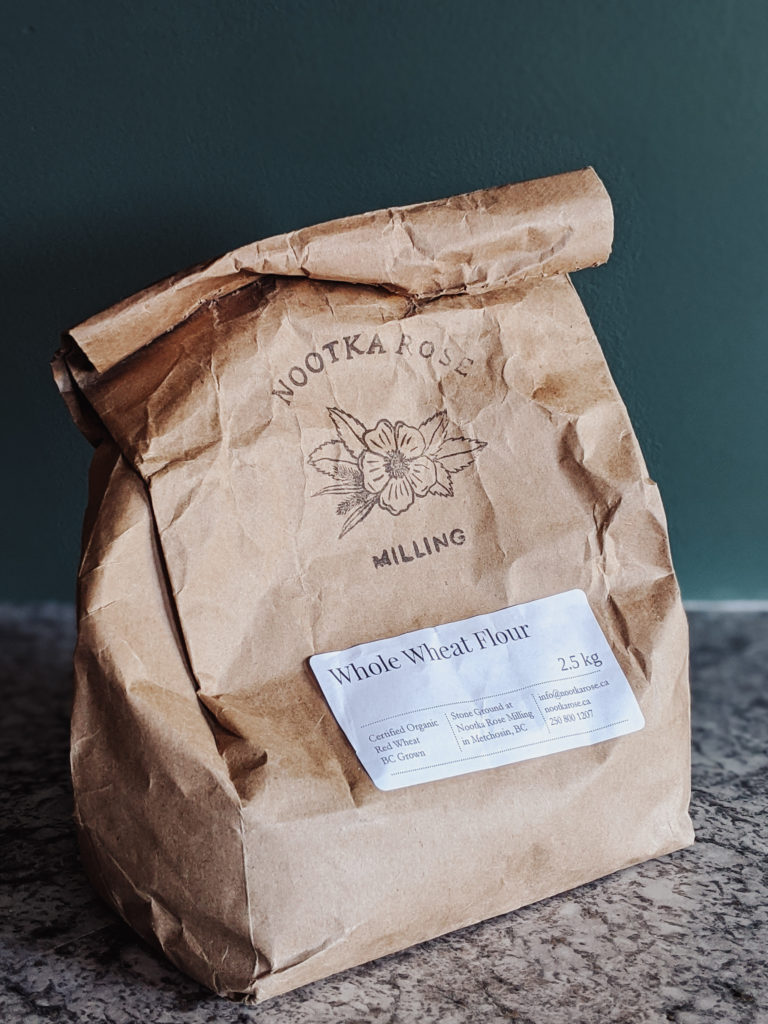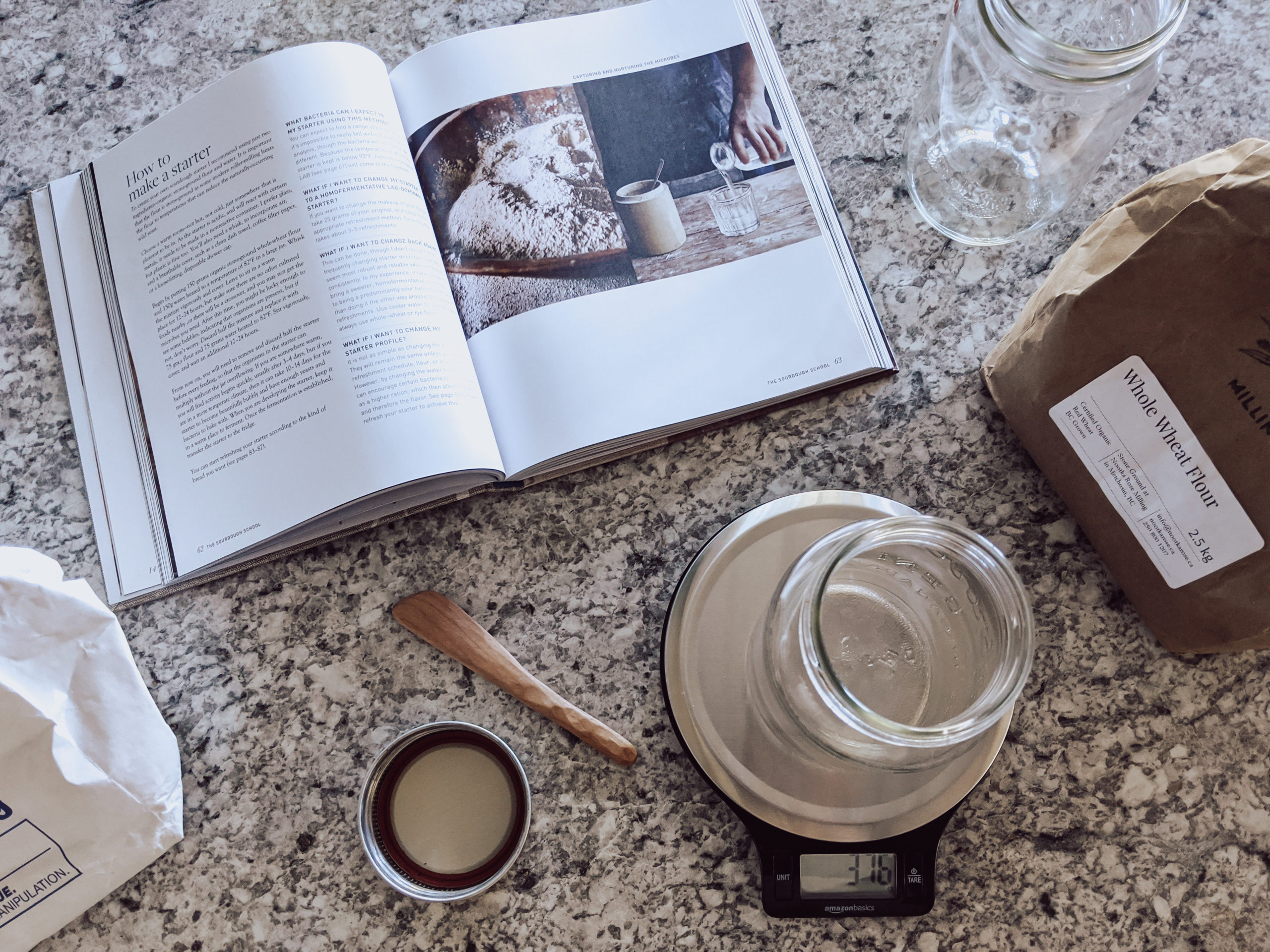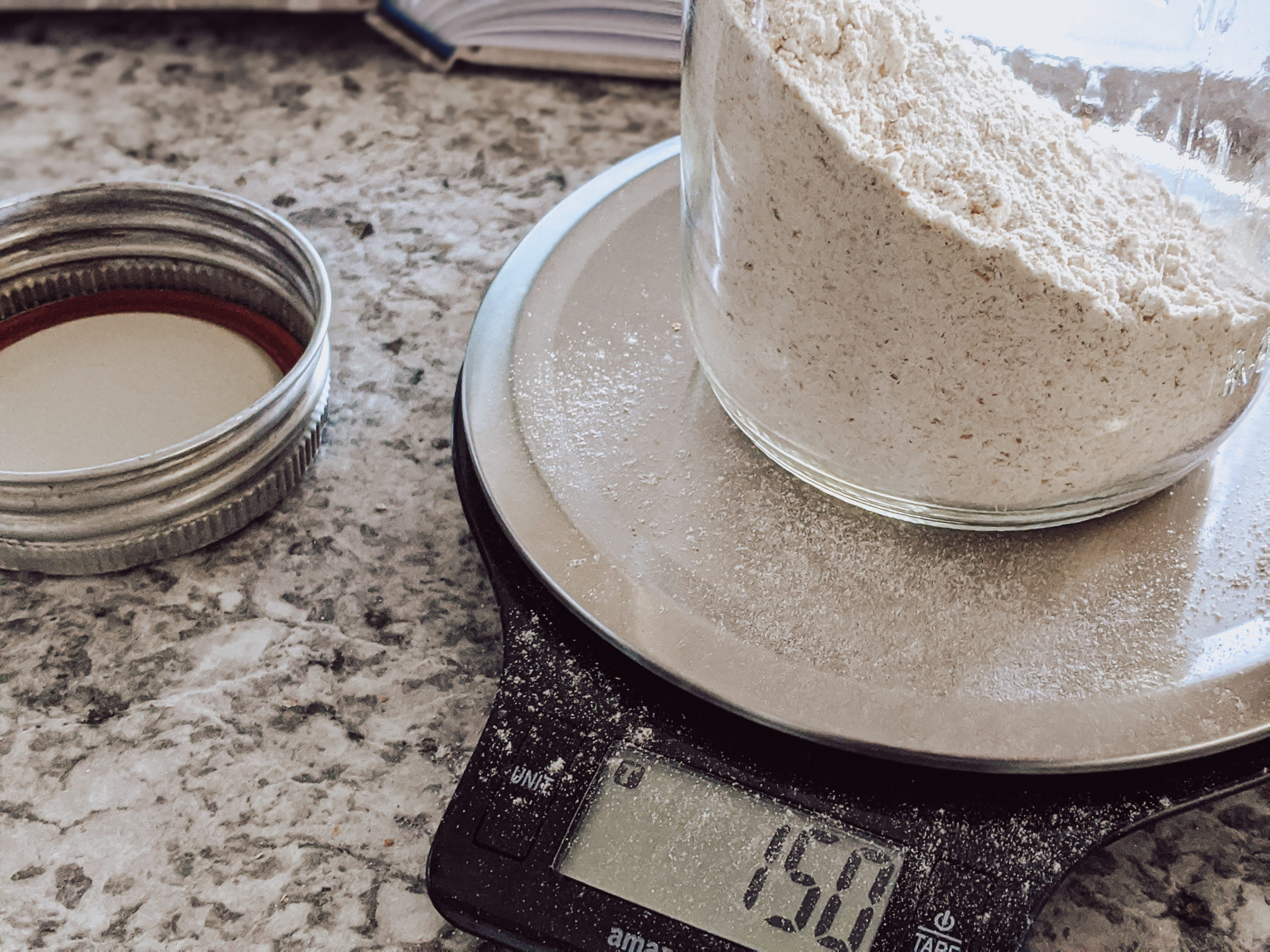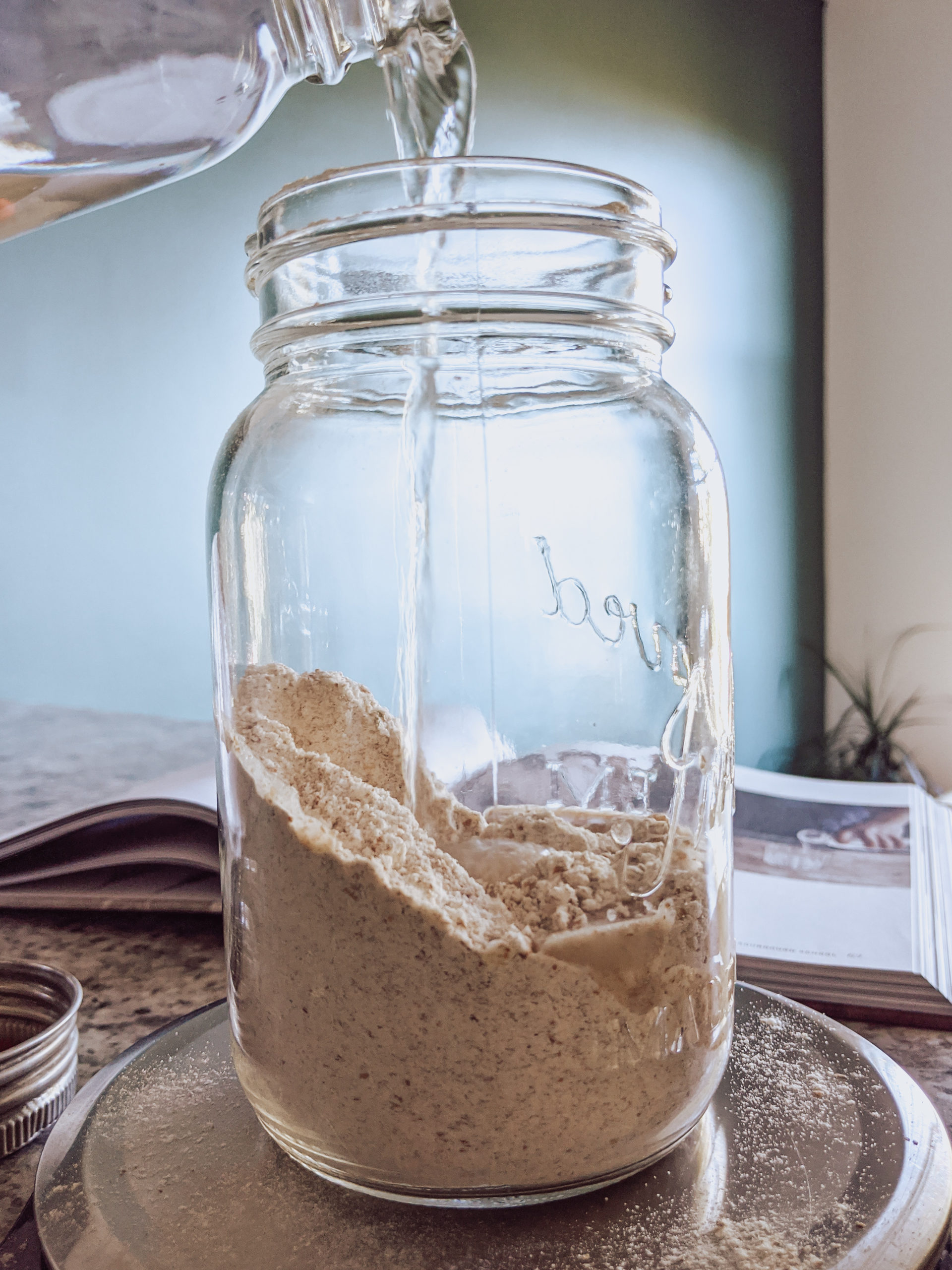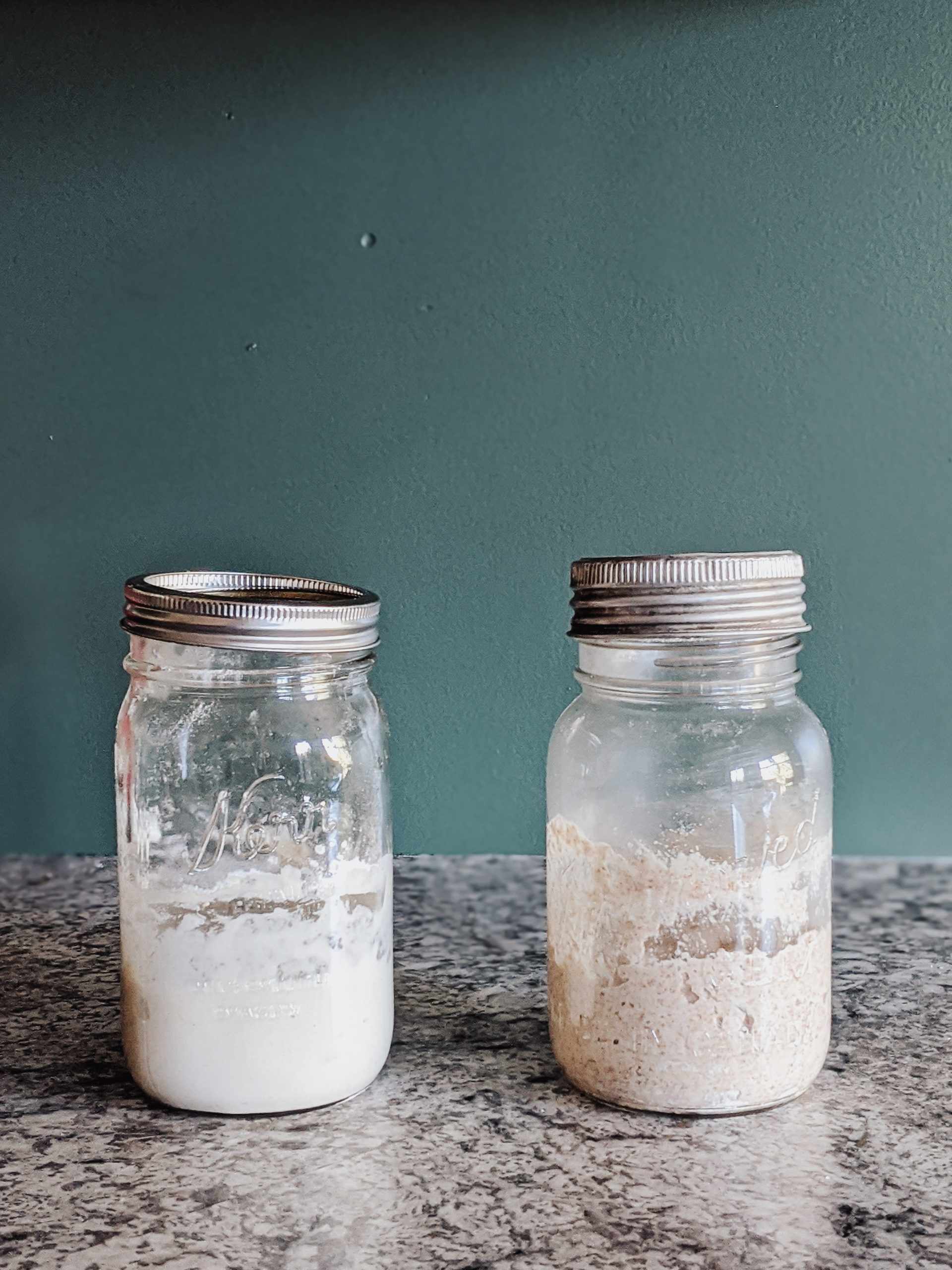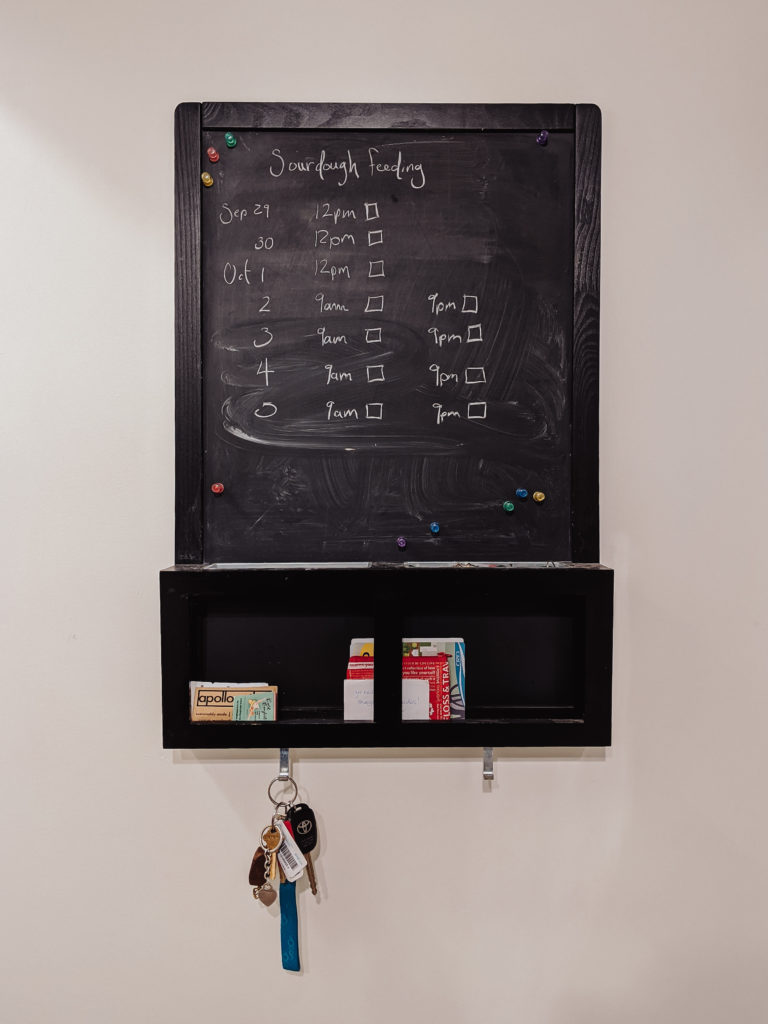After a week and a half of feeding my starters I was starting to get the feeling that they were ready to use. In both the whole wheat and the white, I was seeing consistent growth, increased bubbles (a great sign of fermentation!), and they were both smelling tangy and yogurt-y. Although the whole wheat starter was fermenting a lot quicker than the white, I felt they were both ready to bake.
To bake both of them, I followed the exact same recipe and the exact same method to ensure I would get an accurate comparison of how the different starters effect the process and flavour. I kept things simple by going with a classic white sourdough boule recipe from The Sourdough School, and followed the retarded method.
Recipe
225g leaven*
735g water
800g white flour
200g stone ground whole-wheat flour
20g sea salt
*Leaven:
35g sourdough starter
100g flour of choice
100g water at 86F
Method
The retarded method (vs. the ambient method) gets the dough fermenting at room temperature, then leaving it overnight in the fridge to slow down the yeast and get more acetic acid developing. The process, start to finish- takes up to 3 days due to this slowed down ferment, but results in a more sour, light-vinegary flavoured loaf, which is my personal preference in a sourdough.
This method also produces a more digestible and nutritionally dense loaf, as an added bonus.
Results
Whole-wheat
Although it’s not the most beautiful loaf, I would deem this first attempt a success. There was a decent amount of rise, the loaf was not too dense and the crumby was nice and airy.
The flavour was a touch sour, but mostly hearty, grainy, and a saltier than the white loaf (though not too salty), despite having the same ingredient measurements.
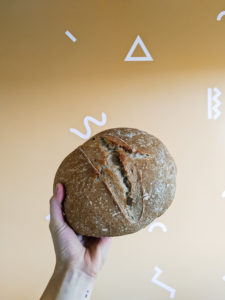
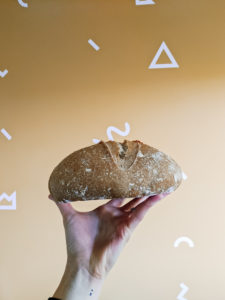
White/All-purpose
This loaf was less impressive… the starter was much less active than the whole wheat one, so it’s pretty clear to see after baking that it just wasn’t mature enough yet. I ended up with a pretty dense, flat loaf that we ended up making into croutons; the silver lining of bad bakes – it can just be made into another tasty, bready treat.
I was surprised, given the immature starter, that I was able to taste a difference in flavour between this and the whole-wheat loaf. Although it was subtle, this loaf definitely had a more sour tang to it, similar to milk or yogurt. It was a cleaner taste with a bit of sweetness to it.
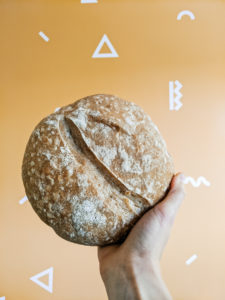
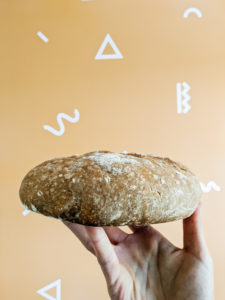
I’m looking forward to maturing both of the starters and seeing how more fermentation changes the bake.
-Megan B.
